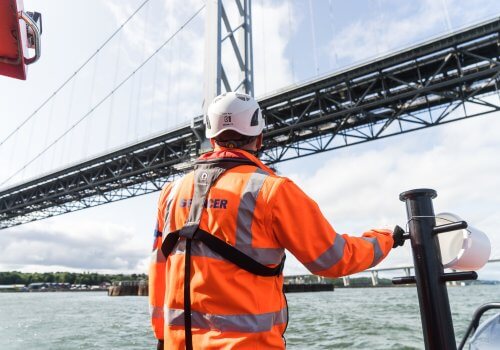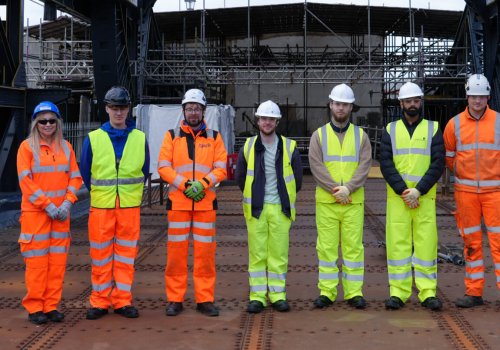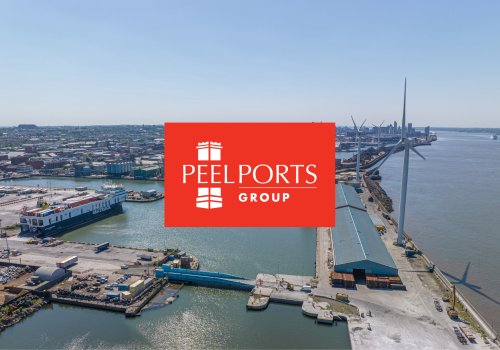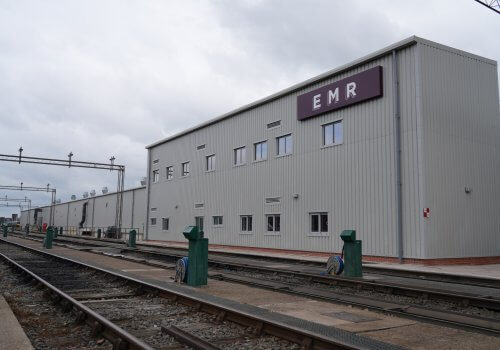Leading specialist engineering business Spencer Group has delivered a challenging project to replace critical parts of the Humber Bridge and safeguard the long-term structural integrity of the iconic crossing.
Spencer managed successfully the highly complex challenge of replacing load-bearing “A-frames”, which connect the main span bridge deck to the towers at either end of the bridge.
The four solid steel A-frames were sited below the bridge’s 1,410-metre main span. They had to be replaced because the A-frame bearings, which allow them to move as the bridge contracts and expands due to the weather and traffic movements, had become worn since the bridge was built 34 years ago.
Spencer carried out all the work on site, working with supply chain partners, and designed and installed temporary “pendels” – load-bearing arms – to support the carriageway prior to transfer to permanent supports.
The A-frames and bearings have now been replaced by a more robust system of pendels and “wind shoes”, which absorb wind loading on the bridge deck and reduce the associated loads on the new bearing system. Spencer has also carried out associated strengthening work on the bridge.
Spencer worked with global engineering and design consultancy Arup on the £4m project. Arup developed the design solution for Spencer to implement.
Spencer Technical Director Nick Cooper said: “The delivery of this project gives the Humber Bridge security in its support bearing systems for many years ahead.
“It has removed the risk of a catastrophic failure that would have required major, unplanned works and the inevitable long-term closure of the bridge, with all the serious consequences that would have had for the region’s transport infrastructure and economy.”
Project Manager Daniel Smith beside the Humber Bridge carriageway.
The Humber Bridge remained open throughout the project, even during the critical periods when the bridge loads were transferred to the temporary and then permanent new supports.
Mr Cooper added: “This project highlighted the multi-disciplinary expertise within the Spencer business, as it required the ability to integrate different disciplines, from hydraulics, to mechanics, to structures, while working in a very confined space.
“Our knowledge of different disciplines and our ability to do the detailed design related to those disciplines meant that we knew exactly what the risks were so we could mitigate and remove these in order to deliver the project successfully.”
Spencer’s Project Manager for the contract, Daniel Smith, said the Spencer team worked collaboratively with Arup to overcome the many technical and engineering challenges the project presented during the course of the works.
“It’s been very much a team effort, with lots of ideas coming forward from within the Spencer team and Arup colleagues to address the many complex issues this project posed. People within the team have come up ways to work efficiently and cost-effectively to deliver the best possible results.
“Having previously carried out projects to inspect and then prevent corrosion of the main cables on the Humber Bridge, we are delighted to have once again delivered a vitally important maintenance scheme for such a landmark structure.
“Spencer was founded in Hull and has its headquarters in the city, so this has been an especially prestigious project for us. We work across the UK and Europe, but it is particularly pleasing to have delivered such a vitally important project to maintain a world-famous crossing on our doorstep.”
The project reinforces Spencer’s reputation for delivering successfully complex, high-level bridge works. It has used its trademarked gantry system, the Cable Crawler, to enable vital dehumidification work to prevent corrosion of cables on the Humber, Severn and Forth Road suspension bridges, as well as the Alvsborg Bridge in Sweden.
A Spencer team will soon resume work on the largest retro-fitted bridge dehumidification project ever undertaken worldwide – on the East Bridge in Denmark, the third largest suspension bridge in the world and part of the mammoth 18km Storebaelt (Great Belt Bridge) crossing, linking the eastern and western parts of the country.
The Humber Bridge project was recognised recently at the Institution of Civil Engineers (ICE) annual Yorkshire and Humber Awards, taking the Smeaton Award for projects worth between £500,000 and £5m. The awards judges hailed the project as “innovative” in addressing the many technical challenges involved in both the design and construction solution.
Project Manager Daniel Smith inspects the new supports below the main span of the Humber Bridge.











